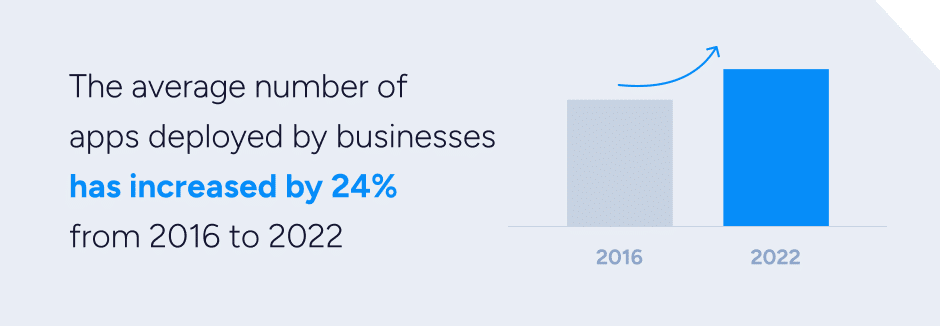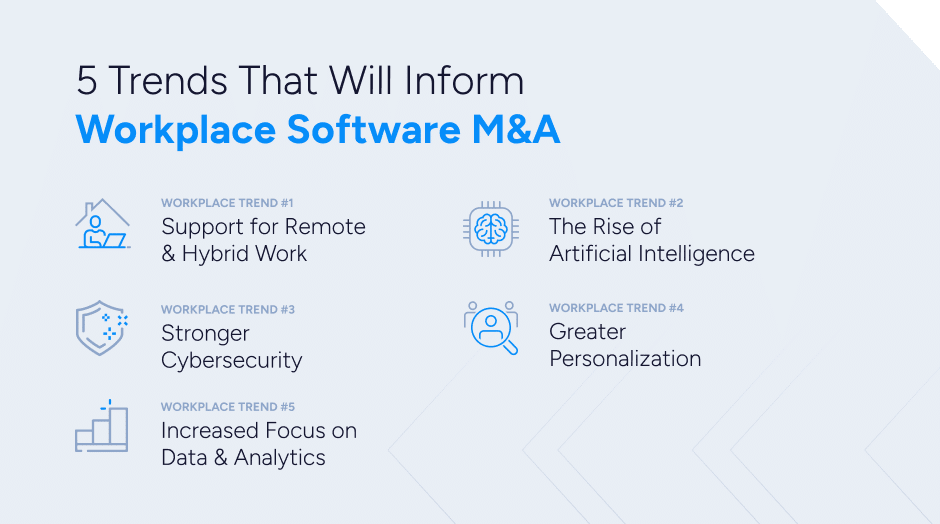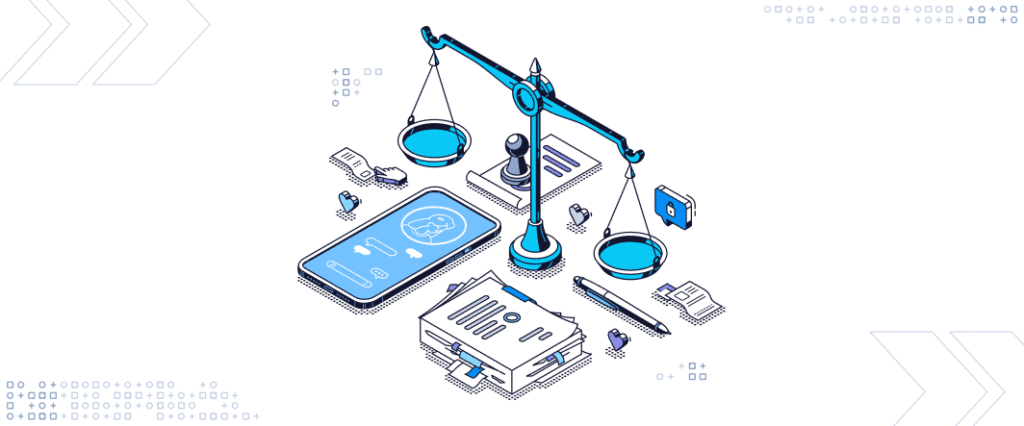5 Workplace Trends That Are Boosting Software & SaaS M&A

Today’s workplace is no longer only centered around an office; it is anywhere you have an internet connection. Mobile devices and social media have changed the way that businesses connect with their customers and employees. Tools such as video conferencing, instant messaging, collaborative platforms, project management software, and HR management software are widely used to improve productivity, collaboration, and efficiency. Meanwhile, artificial intelligence and machine learning, like ChatGPT, are still in their infancy and will no doubt create even more profound changes for workers around the globe. There’s no doubt workplace trends are rapidly evolving, and therefore, so are the trends impacting Workplace Tech SaaS M&A.
A study found that 98% of remote workers would like to work remotely, at least some of the time, for the rest of their careers. While there has been pushback from some corners, many companies giving employees the option of remote work results in higher retention rates, better productivity, and cost savings.
Remote work is here to stay, and companies are moving rapidly to enact new policies, establish better communications strategies, and strengthen company culture. In response, workplace tech is evolving rapidly to address communication, security, engagement, and other aspects of remote work.
Companies Are Using More Workplace Tools than Ever Before

The landscape of workplace tools is more diverse and expansive than ever. While factors such as company size, industry, and unique business needs play a role in the number of tools deployed, a discernible upward trend is evident. Okta’s annual Businesses at Work 2022 report reveals a 24% surge in the average number of apps used by businesses between 2016 and 2022. Remarkably, larger corporations, on average, deploy around 187 distinct tools, spanning realms from communication, collaboration, and project management to CRM, accounting, HR, and marketing.
As businesses continue to adopt new technologies and tools to improve their operations, it is likely that the number of workplace tools used will continue to grow.
Workplace Tech Categories
There are thousands of workplace tech tools, but virtually all of them fall within a handful of categories. The following are just a few examples of the many SaaS workplace tools available. Each one provides unique features and benefits that can help businesses improve their operations, increase productivity, and gain a competitive advantage.
RELATED BLOG POST: 4 Emerging Digital Marketing Trends & How SaaS Companies Can Use Them
Communication and Collaboration Tools
Many SaaS platforms provide collaboration tools that allow employees to work together on projects, share documents, and communicate in real time, regardless of their location or time zone. This streamlines project management and improves efficiency by reducing the need for back-and-forth communication. Examples include Slack, Microsoft Teams, Zoom, and Google Meet.
Project Management and Workflow Tools
These tools help businesses manage projects, assign tasks, and track progress, resulting in improved efficiency and productivity. Examples include Trello, Asana, Monday.com, and Jira.
Customer Relationship Management (CRM) Tools
CRM tools help businesses manage customer interactions, track customer preferences, and provide personalized recommendations, resulting in improved customer satisfaction and retention rates. Examples include Salesforce, HubSpot, and Zoho.
Accounting and Finance Tools
These tools help businesses manage their finances, track expenses, and create invoices, resulting in improved financial management and cost savings. Examples include QuickBooks, Xero, and FreshBooks.
Human Resources (HR) Tools
HR tools help businesses manage employee data, benefits, and payroll, resulting in improved HR management and compliance. Examples include BambooHR, Zenefits, and Gusto.
While remote/hybrid work underpins a significant segment of workplace tech, organizations also need to deliver value better and faster to compete in the digital economy. Workplace tech can help leaders prepare for volatile business environments, mitigate risks, and pursue new growth opportunities. It will also be instrumental in scaling the workforce, whether by enabling people to do more, enabling them to work in lower-cost-of-living environments by working remotely, or enabling a broader and less expensive talent pool for companies to choose from.
We’ve spotted five workplace trends that we believe will continue to inform workplace software M&A for the foreseeable future.

Workplace Trend #1: Support for Remote & Hybrid Work
As discussed above, hybrid and remote work are here to stay. In response, workplace technology is evolving to support this new way of working, with a greater focus on collaboration and communication tools that can facilitate virtual meetings and teamwork.
Workplace tech SaaS supports the remote workforce in a number of ways, including:
Collaboration Tools
Workplace technology provides employees with tools for virtual collaboration, such as video conferencing, instant messaging, and project management software. These tools enable remote and in-office employees to work together seamlessly, share information, and collaborate effectively.
Cloud Computing
Cloud computing provides employees with secure, remote access to files, applications, and data. This enables employees to work from anywhere, on any device, and eliminates the need for physical infrastructure.
Mobile Applications
Workplace technology can provide employees with mobile applications that enable them to access information, collaborate with colleagues, and perform work tasks from their smartphones or tablets.
Analytics
Workplace technology can provide businesses with valuable insights into employee behavior, productivity, and engagement. This enables businesses to optimize work processes, identify areas for improvement, and make data-driven decisions.
Workplace Trend #2: The Rise of Artificial Intelligence
Increasingly, AI is being integrated into workplace technology tools, providing businesses with new ways to automate tasks, improve decision-making, and enhance customer experiences. AI-powered chatbots, virtual assistants, and predictive analytics are just a few examples of how AI is being used in the workplace. This trend encompasses the following:
Automation
AI-powered automation can help businesses automate repetitive and time-consuming tasks, such as data entry, invoicing, and scheduling. This can help reduce errors, increase efficiency, and free up employees to focus on more strategic tasks.
Decision-Making
AI can help businesses make more informed and data-driven decisions by providing insights and predictions based on large amounts of data. AI-powered analytics and predictive modeling can help businesses identify trends, opportunities, and potential risks.
Personalization
AI can provide users with customized experiences that are tailored to their individual needs and preferences. Personalization can help increase user adoption, engagement, and satisfaction, as well as improve productivity and efficiency.
Chatbots and Virtual Assistants
AI-powered chatbots and virtual assistants can help businesses automate customer support and enhance customer experiences. Chatbots can help customers quickly and easily find answers to their questions, while virtual assistants can help employees manage their schedules, tasks, and communications.
Predictive Maintenance
AI can help businesses improve maintenance operations by predicting equipment failures before they occur. AI-powered sensors and predictive analytics can monitor equipment and identify potential issues, allowing businesses to proactively address them and prevent downtime.
Workplace Trend #3: Stronger Cybersecurity
As workplace technology tools become more interconnected and data-driven, cybersecurity is becoming increasingly important. Businesses are investing in tools that can help them protect their data, secure their networks, and ensure compliance with regulatory requirements.
A report by Cisco found that 57% of respondents in the United States believe investing in cybersecurity to support remote work will increase and that 61% of executives believe that cybersecurity will be a top priority in the post-COVID-19 world. Improved cybersecurity includes:
Access Control
Workplace technology can improve cybersecurity by implementing access control measures, such as two-factor and biometric authentication. These measures ensure that only authorized individuals have access to sensitive data and systems.
Encryption
By encrypting data in transit and at rest, this technology ensures that sensitive data cannot be accessed or intercepted by unauthorized individuals.
Monitoring and Logging
Monitoring system activity and logging events allow businesses to quickly detect and respond to security incidents.
Threat Detection
Artificial intelligence and machine learning can be used to detect and respond to security threats in real time. This includes detecting and blocking suspicious activity, such as malware or phishing attacks.
Compliance
Workplace technology can help ensure compliance with industry and regulatory standards. This includes implementing data protection measures, such as the General Data Protection Regulation (GDPR), and regularly auditing and reporting on security practices.
Employee Training
Workplace tech can be used to provide regular employee training on cybersecurity best practices. This includes educating employees on the risks of cyber threats, how to identify and avoid phishing attacks, and how to report security incidents.
Workplace Trend #4: Greater Personalization
Workplace technology tools are becoming more personalized with advanced analytics, machine learning, and other AI-powered technologies, providing users with customized experiences that are tailored to their individual needs and preferences. According to Salesforce, 68% of customers expect businesses to use their data to personalize their experiences. Meanwhile, the number of businesses that tailor content to individual departments and employees rose from 13% in 2021 to 32% in 2022. Personalization can help increase user adoption, engagement, and satisfaction, as well as improve productivity and efficiency.
Here are some specific ways in which workplace technology tools are becoming more personalized:
Personalized User Interfaces
Many workplace technology tools now offer personalized user interfaces, allowing users to modify their experiences by selecting the features and information that are most relevant to their work.
Data-Driven Personalization
Some workplace technology tools now use data analytics to identify patterns and insights about user behavior, preferences, and work habits. This information can then be used to provide personalized recommendations, workflows, and insights.
Machine Learning
Increasingly, workplace technology tools are using machine learning algorithms to personalize their features and recommendations based on user data. For example, machine learning can be used to recommend personalized training materials or suggest new workflows based on the user’s past behavior.
Gamification
Some workplace technology tools are incorporating gamification elements, such as rewards and badges, to encourage user engagement and personalize the user experience
Workplace Trend #5: Increased Focus on Data and Analytics
With the growing use of technology in the workplace, businesses are generating vast amounts of data on employee behavior, customer preferences, and market trends. By leveraging workplace technology for data analysis, they can gain valuable insights into their operations and customers, optimize resources, and make informed decisions to stay ahead of the competition.
Some examples of this trend include:
Data Collection
Workplace tech can collect data from various sources, including customer interactions, website traffic, and internal business operations. This data can be stored in a centralized database for easy access and analysis.
Data Analysis
Workplace tech tools can analyze data in real time, providing insights into business performance, customer behavior, and market trends and helping businesses make informed decisions, improve processes, and optimize resources.
Data Visualization
By providing visual representations of data through charts, graphs, and dashboards, workplace tech can help businesses understand complex data sets and identify trends and patterns.
Predictive Analytics
Workplace tech tools can use machine-learning algorithms to predict future outcomes based on historical data. Predictive analytics can help businesses identify opportunities and make proactive decisions.
Why Are Buyers and Investors Pursuing Workplace Tech Targets?
Strategic buyers, especially from the hardware and physical realm like Johnson Controls, are increasingly attracted to organizations like FM:Systems. At the forefront of these reasons is the substantial Annual Recurring Revenue (ARR). A driving force behind this interest is digital transformation (DX), which now permeates sectors from manufacturing and property management to educational institutions and government entities.
LEARN MORE: How to Know When It’s The Right Time to Sell Your Company
While DX adoption’s pace varies by industry, the universal objective is clear: enhance automation and leverage data, including AI and ML, to bolster automated operations, predictive analytics, and data-driven decision-making. In this transformative journey, SaaS software emerges as a critical enabler.
Specific sectors like IWMS (Integrated Workplace Management Systems) and EAM (Enterprise Asset Management) are indispensable components of the broader DX initiative. Within the evolving landscape of work, achieving productivity in a Work From Anywhere (WFM) or hybrid environment is paramount. Accountability, collaboration tools, and other essential PropTech elements form the foundation of contemporary workforce management, and this dynamic is unlikely to change, possibly enduring indefinitely.
The management of physical buildings, campuses, and facilities has undergone a significant shift due to the rise of the WFM/hybrid model. Modern PropTech solutions are indispensable in facilitating this paradigm shift, impacting both operational and financial aspects. Maximizing the utility of available square footage is of utmost importance, striking a delicate balance that aligns space with team needs. This equilibrium is crucial for morale, safety, productivity, and financial well-being.
It’s noteworthy that our physical workplaces are no longer just brick-and-mortar spaces but extensions of software ecosystems and collaboration tools. PropTech SaaS solutions play a central role in this evolution, making them a compelling domain for organizations to engage. As evident from the transactions mentioned below, they also prove to be financially rewarding for their founders.
Given the rapid transformations within the real estate landscape, it’s evident that the “build” approach will require considerably more time compared to the “buy” strategy, especially for strategic players transitioning from legacy physical-world models.
To gain a comprehensive overview of the latest developments in varying SaaS sectors, access our Quarterly SaaS Report, providing insights into deal activity across major SaaS verticals and product categories.











